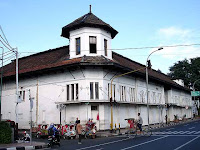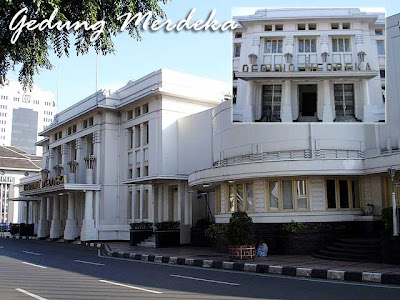
 I've been forwarding articles about the ludicrous project being constructed in Talisay, Batangas since I first heard about it several days ago. It just shows how much brains (or the lack of it) some of our public officials have. Imagine constructing an elevator from the top of the crater down to the crater lake for the lazy tourists! How absurd can the mayor of Talisay get?! Our natural heritage has no price tag!
I've been forwarding articles about the ludicrous project being constructed in Talisay, Batangas since I first heard about it several days ago. It just shows how much brains (or the lack of it) some of our public officials have. Imagine constructing an elevator from the top of the crater down to the crater lake for the lazy tourists! How absurd can the mayor of Talisay get?! Our natural heritage has no price tag!Here is the column of Gemma Cruz-Araneta (Manila Bulletin, Thursday, 28 July 2007). I'm posting it in full here for the benefit of all since she hit every point right on the dot:
Landscape: No pride of place
By Gemma Cruz Araneta
The bad news is that a Korean “health spa” and a Korean builder, Jung Ang Interventure Corporation are constructing a resort along the crater of the Taal Volcano. What is worse, according to news reports, is that the Secretary of the Department of Environment and Natural Resources (DENR) pointed out that although Taal is a protected area, it is not entirely closed to “ecotourism” projects that do not harm the environment. However, a Department of Tourism (DOT) spokesperson was quick to affirm that the Korean project was never endorsed by them simply because the Taal Volcano area is considered a permanent danger zone and the DOT is not in the habit of risking the lives of tourists and investors. Worst of all is the revelation that thirteen mayors of the towns surrounding Taal Lake have no pride of place.
Diffidently, the Philippine Institute of Volcanology and Seismology could only warn that permanent structures should not be built in permanent danger zones. That is why it was almost exhilarating to see (on television) newly-elected Batangas governor, Vilma Santos Recto denouncing the same Korean project. She said she would not allow it because Taal Lake and volcano are areas protected by law. That was probably her first official declaration after having been sworn in. I do hope she has enough political will to go against the tide of financial enticements, the ineptitude of bureaucratic Pontius Pilates, unscrupulous stationary bandits and assorted piranhas around who a provincial governor has to swim and survive.
I hope that, in these frightful days of killings and disappearances, the PAMALAKAYA and the Samahan ng mga Mamamayan sa Lawa ng Taal (Samataal) do not lose courage nor steam. Already, they are being called “leftist” which, in the Philippine context, is tantamount to destroying the credibility of these advocates. The Kilusang Magbubukid ng Pilipinas (KMP), associated with the Left since martial law days are resolutely supporting the Taal Lake farmers in their struggle against the Korean health spa.
Doesn’t this give you a nasty feeling that the country is being sold bit by bit to the highest bidder? One might wake up, on a sunny morning, only to find out that while we were asleep, our national territory had been parceled and fragmented by assorted developers. . I am beginning to think a conspiracy has been going on right under our noses. Could it be mere coincidence that more and more Filipinos have forgotten, or have been conditioned to doubt and question that we ever declared ourselves an independent republic? This year, the nation did not stop to celebrate Independence Day with the usual reverence, pomp and grandeur. On Rizal’s birthday, the Chief Executive merely sent a wreath to the hero’s, monument. Next week, the anniversary of the Katipunan will most probably pass unnoticed. Is there a concerted effort to make us forget what and who we are?
The National Anthem is no longer Marcha Nacional Filipina but soul and blues; advertisement is stamped on the national flag; historical landmarks are demolished to give way to shopping malls. Alarmingly, there was a request to include the Philippines in China’s master plan and an unsolicited bid to reserve millions of hectares of our national territory for Chinese farmers to cultivate rice, corn and whatever else the once Sleeping Giant needs to sustain its robust growth. The USA which has coveted Mindanao since Pershing and Kudarat clashed swords, will finally gets its wish-- MINSUPALA-- with a new Mutual Defense Treaty as an added bonus. Is it true that Sec. Condoleeza Rice is scheduled to come for an ocular inspection? Lamentably, for those who have no sense of nation and no pride of place, everything is for sale.
* * *
Save the Rizal Shrine!
While the spa issue in Taal has been raging, PTA GM Dean Barbers has silently but blatantly continued construction in Intramuros! If the sports complex is completed, it will damage the area around the Rizal Shrine, blocking the view from the walls. Calling all lovers of Rizal and concerned citizens of the Philippines, let's continue our fight to protect the Rizal Shrine and the walls of Intramuros!
Here is an older post about it: Save the walls of Intramuros!
Related articles
Ugly side of Tourism Authority revealedFormer PTA heads want Gen. Mgr. Barbers chargedWhat is behind Barbers’ insistence on this project?Ex-PTA chiefs want Barbers sued for Intramuros projectFormer PTA heads demand Barbers’ resignationIntramuros a warehouse?PTA’s illegal designs on Intramuros
Technorati Tags: talisay, batangas, taal volcano, heritage, conservation, travel, travel blog



















